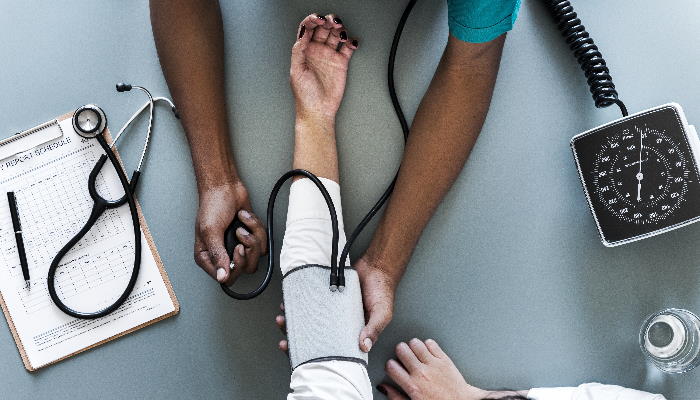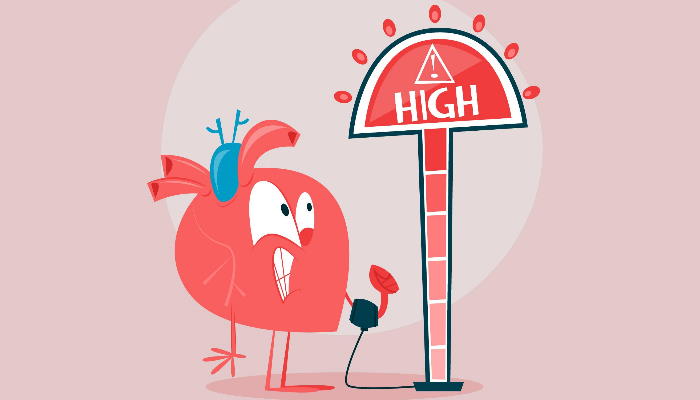
Mano foto creata da rawpixel.com - it.freepik.com
The arterial hypertension is an important cardiovascular risk factor, widespread especially in the Western world and, in many cases, the main cause of hypertension is due to an incorrect style lifestyle. Thousands of people have hypertension, often undiagnosed.
Hypertension is a state where arterial pressure is much higher (and chronically) than the optimal defined parameters.
Persal parameters 120/75 mmHg
Hypertension >140/90 mmHg
Types and Causes of Hypertension
There are 2 types of hypertension: primary hypertension (more frequent, due to an incorrect lifestyle and unbalanced nutrition) and secondary hypertension (i.e. consequence of other pathologies in progress or consequence of taking certain types of drugs).
The risks are quite serious: when the pressure is constantly high (beyond the 'safety' parameters), you can meet important cardiovascular pathologies such as stroke, myocardial , seadcompensation and arterial disease or kidney failure.
In most cases, hypertension is related to an incorrect lifestyle (smoking, sedentary lifestyle, stress..) and excess body weight. The real danger is represented by the visceral fat, that is, the part of adipose tissue concentrated inside the abdominal cavity and distributed between the trunk and the internal organs, and it is precisely this type of fat that releases pro inflammatory.
In general, man is more predisposed to accumulate visceral fat and be at risk; women are "more protected" thanks to the presence of estrogen but the risk is not excluded, especially for those who present an android constitution and, after menopause, the risk increases more.
Hypertension and Diet to Follow
To help control (or re-enter the correct parameters) of the pressure, in addition to the pharmacological therapy prescribed by the attending physician (if necessary) the diet is fundamental: healthy, balanced, varied and with a particular precaution to the intake of salt (not only Sodium) and everything that could cause water retention,

Disegnate a mano vettore creata da freepik - it.freepik.com
Beware of hidden salt!!
- Limit canned foods often contain high concentrations of sodium. Pay particular attention to pickled products, but also to salmon/smoked tuna, sausages, products in oil and/or vinegar
- Do not exceed the portions and frequency of dishes rich in sodium: products such as sausages and cheeses should not be consumed more than 1-2 times a week and, when consumed, you have to choose good quality products (you should not save when health is at stake)
- Avoid the consumption of ready-made condiments with a high amount of sodium: broth nut, ketchup, soy sauce etc...
- Prefer Tuscan bread or with less salt added to white and/or traditional bread containing about 600 mg of sodium per 100 gr
- Read nutrition labels: prefer products that indicate the amount of sodium on the label. 'Low sodium content' is defined as a food which does not exceed 120 mg sodium/100 gr. If sodium is not reported, it is useful to look at the list of ingredients: the ingredients present in greater quantities are written first and those present in smaller quantities last. Do not therefore use foods in which salt appears in the first entries, also indicated in the form of sodium (or Na), sodium chloride, sodium bicarbonate, monosodium phosphate, monospod glutamate, sodium benzoate, sodium citrate. There are on the market nuts or ready-made products (soups, soups, breadsticks, biscuits, rusks, breakfast cereals) that bear on the package the words "without sodium glutamate" or "low sodium product".
There are foods with fantastic draining and fluidizing effects, especially if consumed raw such as carrots, fennel, endive, radicchio, cucumbers, pineapples etc...
Other foods that can help in this particular situation are:
- walnuts and almonds
- Fondant chocolate (75% up): rich in flavonoids, it can help keep blood vessels dilated and lower blood pressure
- Fish: in particular blue fish, rich in Omega 3 (prefer "small" fish such as anchovies, herring, etc., which absorb less mercury and other chemicals due to water pollution)
- Beetroot that contains nitrates, which manage to transform into molecules that help keep blood pressure under control
- Potatoes and Purple carrots (very fashionable in the last period and known almost by everyone): they are rich in a pigment (antocyanin) that is useful to reduce pressure
- Garlic: rich in sostances sulfides that help reduce the risk of stroke and cardiovascular problems
- Foods rich in magnesium and potassium: two minerals involved in hypotensive mechanisms
- Red Wine: contains polyphenols with antioxidant activity but the benefits are observed ONLY when taken in small doses (one glass per day less than 200mL).
Hypertension and Lifestyle
Eas well as food, we also need to follow a style of life that provides:
- the control of weight: the elimination of excess kilos and above all the reduction of the waistline (must be less than 100 cm in men and less than 85 cm in women)
- Drastically reduce (better if Eliminate altogether) the consump of alcohol and cigarette
- Eastic activity, aerobic type species (swimming, cycling, running or, for the more sedentary, even a quick walk) for 45-60 minutes a day at least 3 times a week
- "Open Air": daily exposure of the face, neck and arms to sunlight, not filtered by glass and/or sunscreens, at least 10-15 minutes a day in summer and 20-30 minutes in winter helps to synthesize through the skin vitamin D that promotes intestinal absorption of calccio. Better use of calcium could help reduce the values of the price.
Curated by
Dott.ssa Patalano Myriam Biologist Nutritionist
Ischia Nutrizione Patalano
